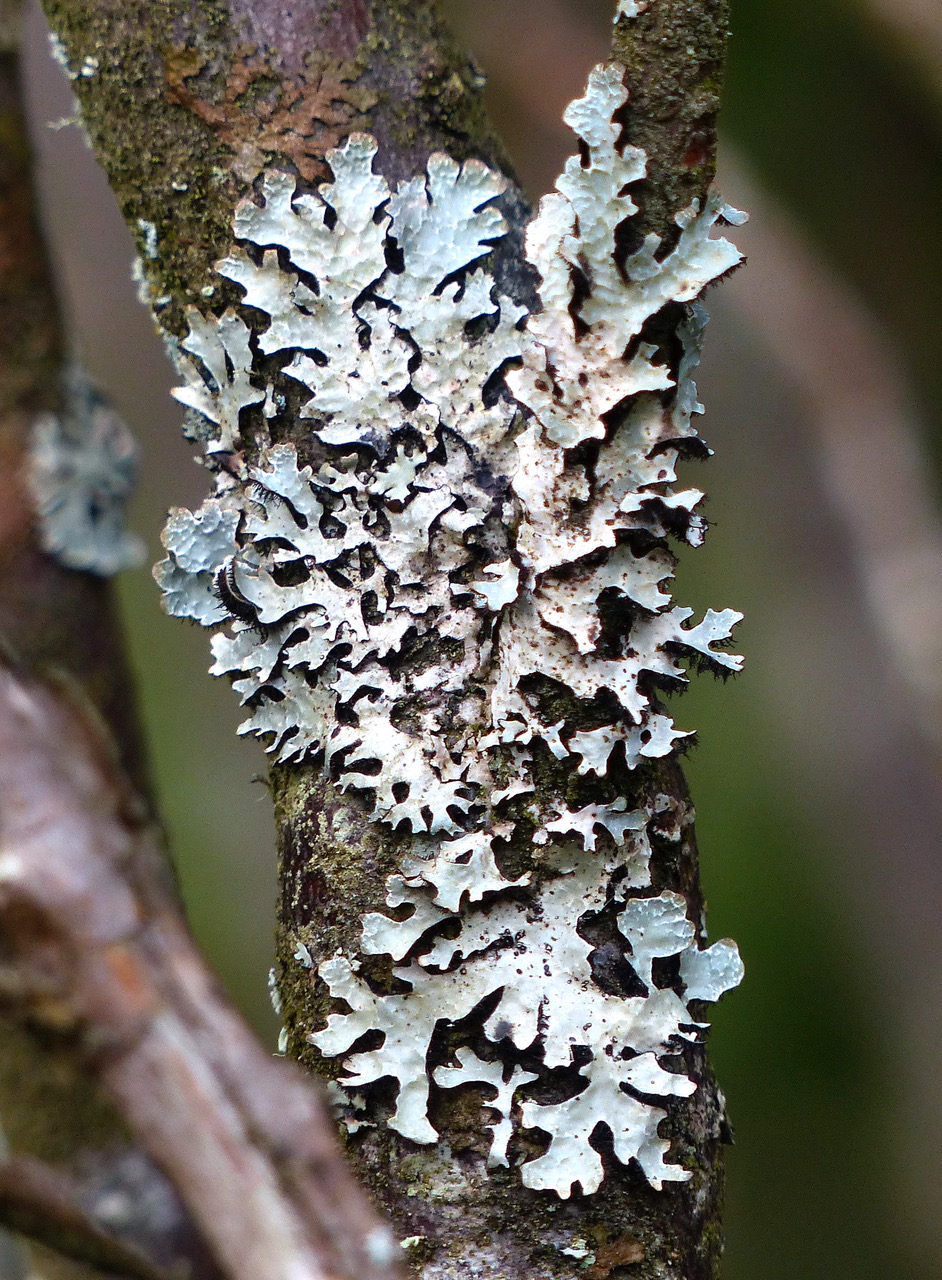Lichen

A Parmelia foliose lichen
Photo by Terry Taylor
A Brief Introduction
Lichen by Terry Taylor
Lichens are composite organisms. They are mostly fungus, but also contain microscopic green algae or blue-green bacteria, which contain chlorophyll. The fungus component takes the carbohydrates from them and in return protects its food producers. This relationship has been called fungi that have discovered agriculture.
There are three basic lichen growth forms – crustose, foliose and fruticose. The crust ones are simplest. The gray patches on alder trunks or the gray dusty coatings on shaded rocks or old stumps are in this group. The foliose ones are leaf like. They are this shape for the same reason leaves are leaf like. The fungal hyphae grow in such a way as to increase the surface area for the algae to gather sunlight. The fruticose form grows like little shrubs or long streamers. The beard lichens that hang from trees are in this group. The Ramalina lichens that are so common on ocean spray branches are another example.
If you look at a leaning tree trunk you will often see lichens on the sheltered dry side, and mosses on the wetter side. The lichens are the gray things, and the mosses are the green things. Although not all lichens are gray. The orange growths on seashore rocks where the birds perch are lichens adapted to nutrient rich sites. Most lichens grow in nutrient poor areas.
For an in depth description look up lichen in Wikipedia.
Terry Taylor
